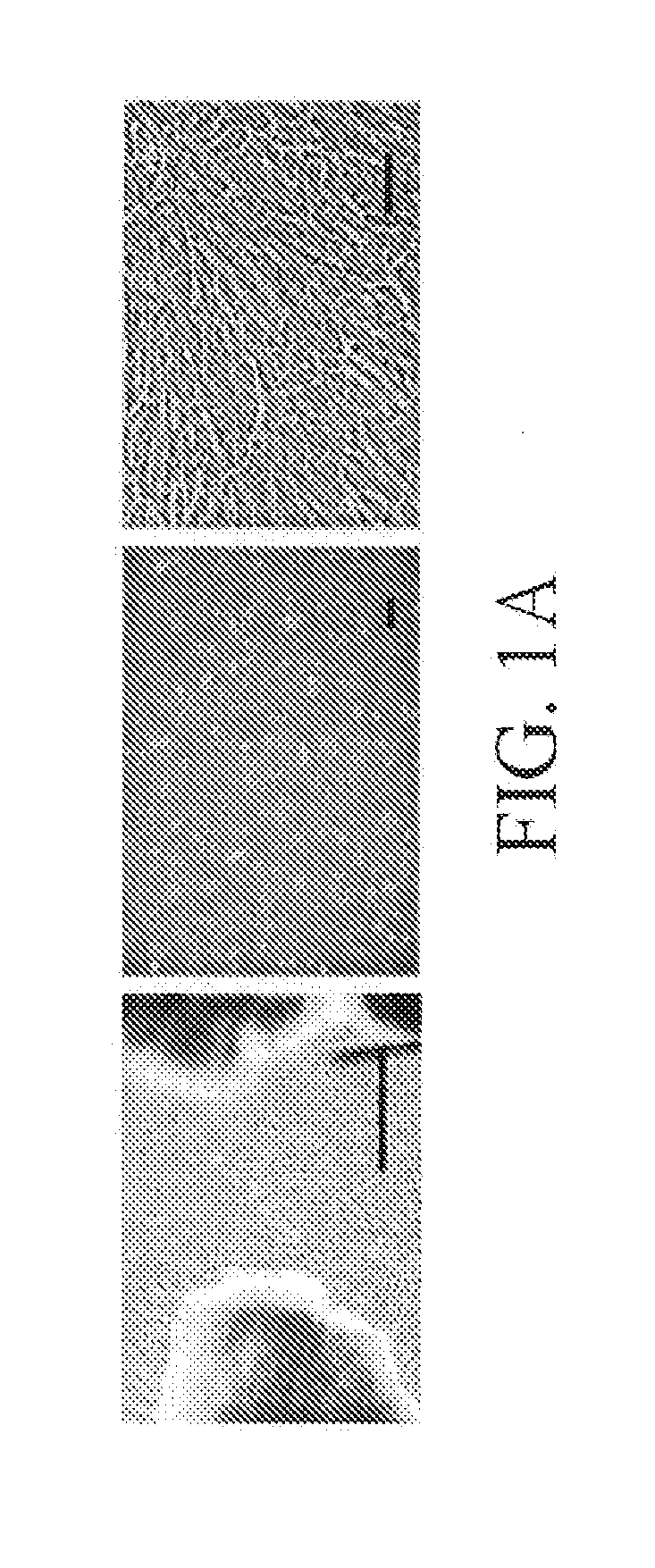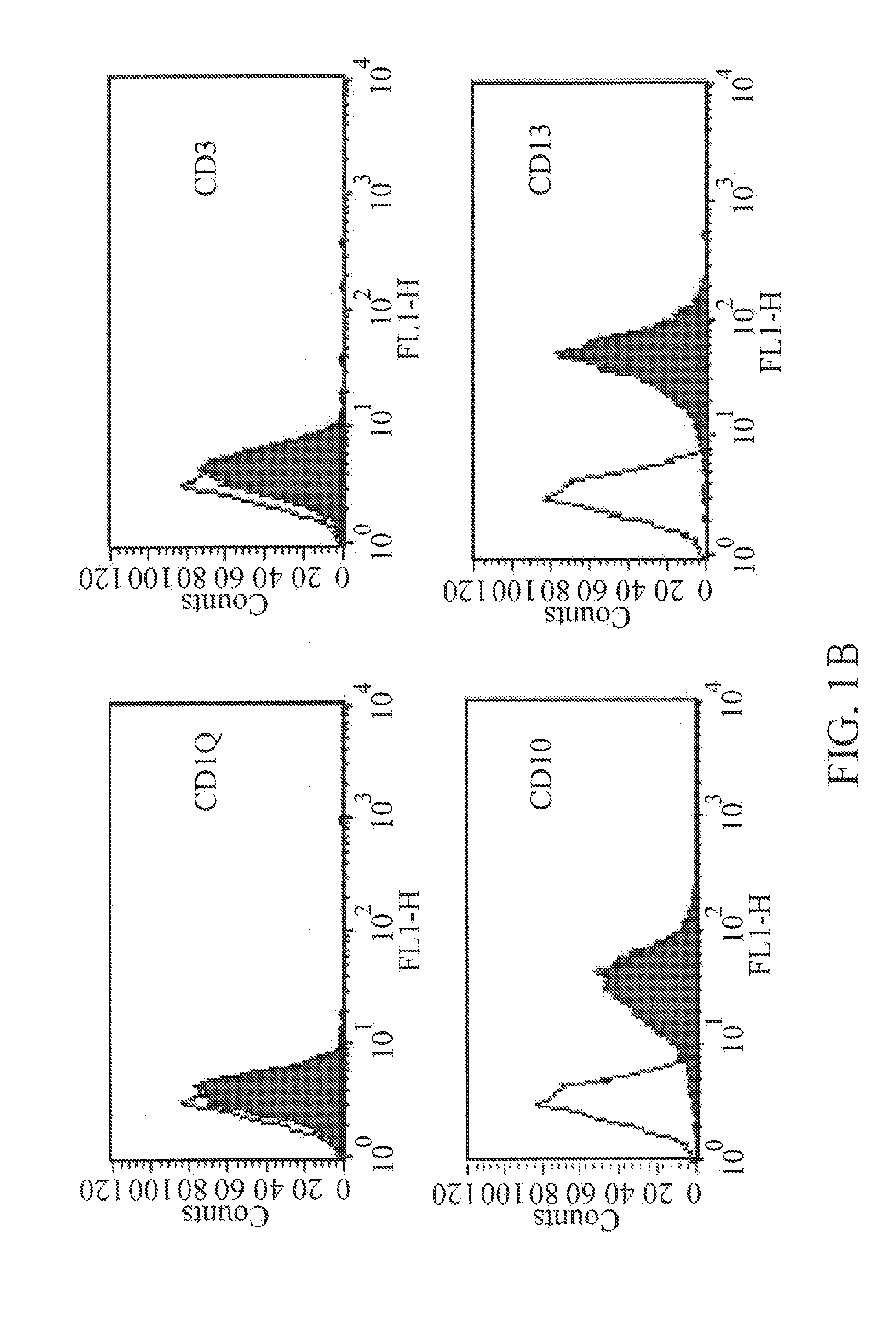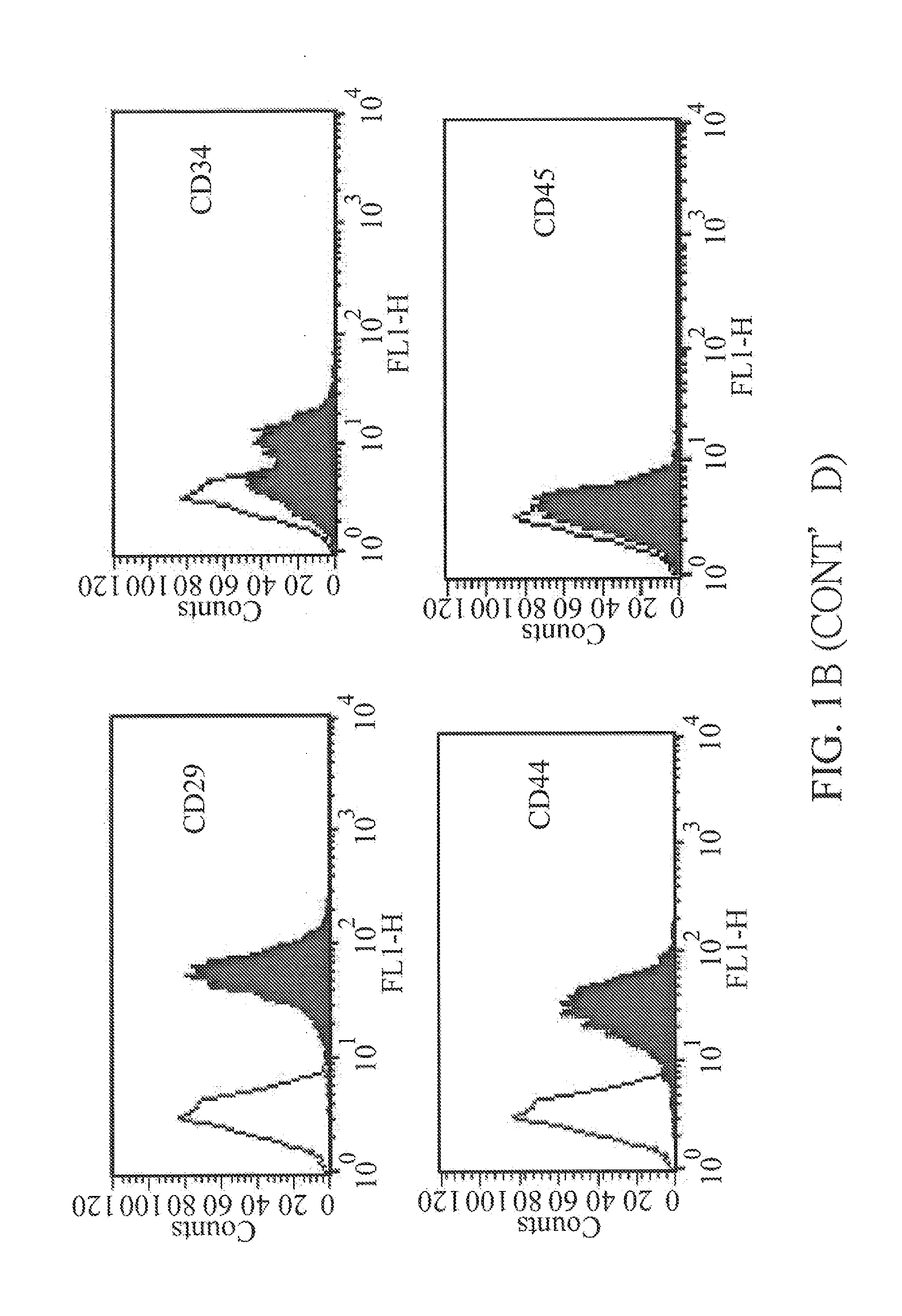Non-tumorigenic expansion of pluripotent stem cells
a technology non-tumorigenic expansion, which is applied in the field of non-tumorigenic expansion of human embryonic stem cells, can solve the problems of unsuitable clinical use for hes cells that have been cultured on mouse feeder cells, insufficient robustness of replacement efforts, and continued cell propagation
- Summary
- Abstract
- Description
- Claims
- Application Information
AI Technical Summary
Benefits of technology
Problems solved by technology
Method used
Image
Examples
Embodiment Construction
[0023]Various specific details are provided herein to provide a more thorough understanding of the invention.
RT-PCR and Quantitative RT-PCR of the Gene and Other Differentiation Marker Genes
[0024]Undifferentiated or differentiated hES cells that had been cultured on HUCMSCs or MEF feeder layers were removed mechanically and treated with RLT lysis buffer (Qiagen). The first strand of cDNA was synthesized using a SuperScript III One-Step RT-PCR kit (Invitrogen) following the manufacturer's instructions. Table 1 presents the sequence, annealing temperature and product size of each pair of primers. All PCR samples were analyzed by electrophoresis on 2% agarose gel that contained 0.5 μg / ml ethidium bromide (Sigma). For quantitative RT-PCR (qRT-PCR) analysis, FastStart universal SYBR green master (ROX, Roche, USA) gene expression assays was used in an ABI Step One Plus system (Applied Biosystems), with GAPDH used as an internal control. The sequences of primers and annealing temperatures ...
PUM
| Property | Measurement | Unit |
|---|---|---|
| weight | aaaaa | aaaaa |
| length | aaaaa | aaaaa |
| doubling time | aaaaa | aaaaa |
Abstract
Description
Claims
Application Information
 Login to View More
Login to View More - R&D
- Intellectual Property
- Life Sciences
- Materials
- Tech Scout
- Unparalleled Data Quality
- Higher Quality Content
- 60% Fewer Hallucinations
Browse by: Latest US Patents, China's latest patents, Technical Efficacy Thesaurus, Application Domain, Technology Topic, Popular Technical Reports.
© 2025 PatSnap. All rights reserved.Legal|Privacy policy|Modern Slavery Act Transparency Statement|Sitemap|About US| Contact US: help@patsnap.com



